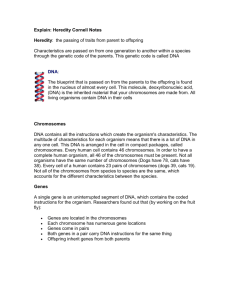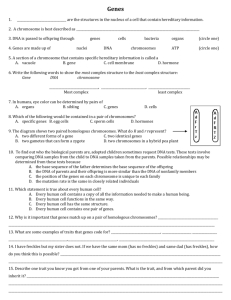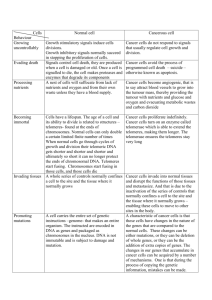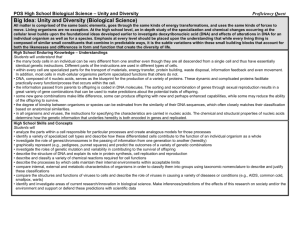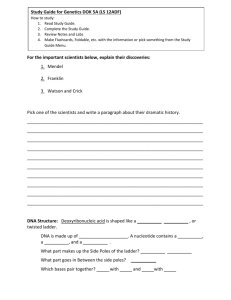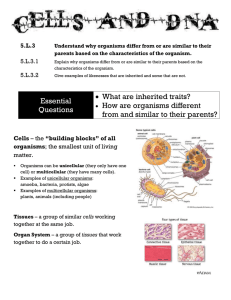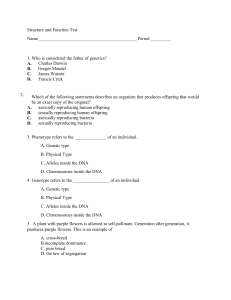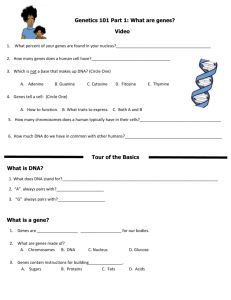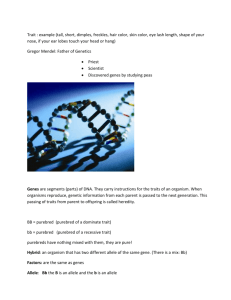Inherited
advertisement
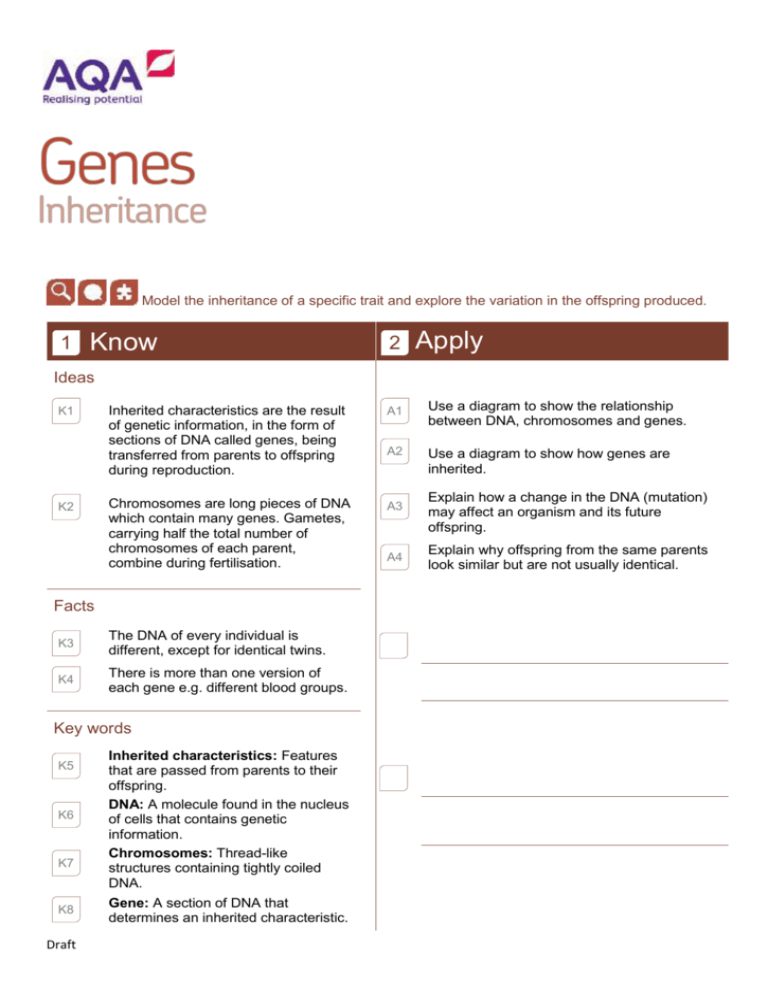
Model the inheritance of a specific trait and explore the variation in the offspring produced. 1 Know 2 Apply Ideas K1 K2 Inherited characteristics are the result of genetic information, in the form of sections of DNA called genes, being transferred from parents to offspring during reproduction. A1 Use a diagram to show the relationship between DNA, chromosomes and genes. A2 Use a diagram to show how genes are inherited. Chromosomes are long pieces of DNA which contain many genes. Gametes, carrying half the total number of chromosomes of each parent, combine during fertilisation. A3 Facts K3 The DNA of every individual is different, except for identical twins. K4 There is more than one version of each gene e.g. different blood groups. Key words K5 K6 K7 K8 Draft Inherited characteristics: Features that are passed from parents to their offspring. DNA: A molecule found in the nucleus of cells that contains genetic information. Chromosomes: Thread-like structures containing tightly coiled DNA. Gene: A section of DNA that determines an inherited characteristic. A4 Explain how a change in the DNA (mutation) may affect an organism and its future offspring. Explain why offspring from the same parents look similar but are not usually identical. 3 Extend E1 Suggest arguments for and against genetic modification. E2 E3 Draft Suggest benefits from scientists knowing all the genes in the human genome. Determine how the number of chromosomes changes during cell division, production of sex cells and fertilisation.



